LISTEN: Vista Radio President Bryan Edwards joins us on Broadcast Dialogue – The Podcast to talk about why Bell’s divestiture of 45 of its radio stations is a good news story for radio, why Vista plans to retain and grow the staff count at those stations, his thoughts on the current regulatory landscape, and more. Listen on your favourite podcast app or here:

OP-ED: “Recent discussions surrounding the sale of a significant number of local radio stations have sparked misconceptions about the viability of radio as a medium. However, this couldn’t be further from the truth,” writes Radio Connects President Caroline Gianias, in an editorial for Broadcast Dialogue. “Canadian Broadcast Radio remains a vibrant and essential platform for communication, entertainment, and advertising, with enduring importance, particularly outside of PPM markets in our local communities…Amidst these discussions, it’s crucial to emphasize the significant role of radio advertising in supporting local businesses. In 2022 alone, local Canadian radio represented a staggering 67% of the $1.5 billion spent in radio advertising in Canada. This statistic underscores the tangible impact that live radio advertising has on local economies.” Read more here.
 United Christian Broadcasters Media Canada (UCB Media), parent company of UCB Radio, has announced its expansion to Medicine Hat, AB as the radio group takes over Vista Radio’s 93.7 Praise FM (CJLT-FM). The first of three stations set to launch in 2024, UCB began broadcasting on the frequency on Feb. 3. 93.7 was purchased from Vista after they were unsuccessful in securing a format change from the CRTC. Medicine Hat will become UCB’s second signal in Alberta joining Fort McMurray. UCB Radio now has 14 stations across the country.
United Christian Broadcasters Media Canada (UCB Media), parent company of UCB Radio, has announced its expansion to Medicine Hat, AB as the radio group takes over Vista Radio’s 93.7 Praise FM (CJLT-FM). The first of three stations set to launch in 2024, UCB began broadcasting on the frequency on Feb. 3. 93.7 was purchased from Vista after they were unsuccessful in securing a format change from the CRTC. Medicine Hat will become UCB’s second signal in Alberta joining Fort McMurray. UCB Radio now has 14 stations across the country.
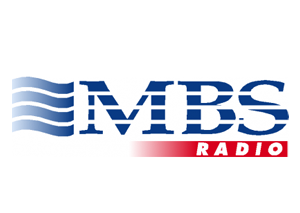 The CRTC has approved an application by Maritime Broadcasting System (MBS) for an AM to FM conversion of CJCW Sussex, NB. The proposed FM station would operate at 92.9 MHz (channel 225A) with an average effective radiated power (ERP) of 723 watts. MBS submitted that converting the station from the AM to FM band would provide a superior signal to its listeners and advertisers currently served by the AM station. MBS plans to continue with its current Adult Contemporary format.
The CRTC has approved an application by Maritime Broadcasting System (MBS) for an AM to FM conversion of CJCW Sussex, NB. The proposed FM station would operate at 92.9 MHz (channel 225A) with an average effective radiated power (ERP) of 723 watts. MBS submitted that converting the station from the AM to FM band would provide a superior signal to its listeners and advertisers currently served by the AM station. MBS plans to continue with its current Adult Contemporary format.
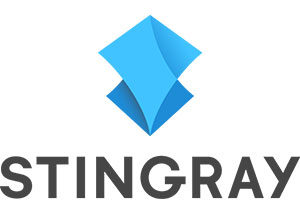 The CRTC has approved an application by Stingray Radio for an AM to FM conversion of CKDQ Drumheller. The proposed station would operate at 92.5 MHz (channel 223B) with an average effective radiated power (ERP) of 24,745 watts. Stingray submitted that its proposal to convert CKDQ to the FM band would address issues relating to failing legacy equipment and infrastructure at the AM station. The AM station’s Hot Country music format would be carried over to the new FM station, aimed at the same target audience (A25-54).
The CRTC has approved an application by Stingray Radio for an AM to FM conversion of CKDQ Drumheller. The proposed station would operate at 92.5 MHz (channel 223B) with an average effective radiated power (ERP) of 24,745 watts. Stingray submitted that its proposal to convert CKDQ to the FM band would address issues relating to failing legacy equipment and infrastructure at the AM station. The AM station’s Hot Country music format would be carried over to the new FM station, aimed at the same target audience (A25-54).

The CRTC has approved an application by not-for-profit Gospel Music Radio for a licence to operate an English-language commercial speciality (Religious music) FM radio station in Oromocto, NB. The station would operate at 94.7 MHz (channel 234A1) with an average effective radiated power (ERP) of 250 watts. Gospel Radio plans to broadcast at least 50.5 hours of local programming each week, including local information, news, events, interviews, talk shows, weather and road reports, information from CFB Gagetown, and other spoken word programming. The applicant plans to devote four hours per broadcast week to newscasts with 100% of its music from subcategory 35 (Non-classic religious), proposing a minimum of 35% Canadian content
 The CRTC has approved an application by U Multicultural Inc. for a broadcast licence to operate an English-language community FM radio station in Winnipeg, subject to certain conditions. The applicant currently operates an online radio service known as U Radio. The proposed station would operate at 88.7 MHz (channel 204A) with an effective radiated power (ERP) of 800 watts. UMI proposes to broadcast 126 hours of local programming each broadcast week, proposing to devote 40 hours (31%) of programming to third languages (Russian, Ukrainian, Portuguese, Mandarin, Arabic, Urdu and Bangla), 20 minutes of station programming to French-language programming, and 60 minutes to Indigenous languages (specifically, Inuktitut, Ojibwe and Cree). UMI says the station will focus on ethnic programming, serving newcomers, immigrants and refugees. The commission also approved U Multicultural’s application for a licence to operate a multilingual community television station in Winnipeg, which would target more than 30 ethnocultural and Indigenous communities. Up to 40% of its total programming would be third-language programs.
The CRTC has approved an application by U Multicultural Inc. for a broadcast licence to operate an English-language community FM radio station in Winnipeg, subject to certain conditions. The applicant currently operates an online radio service known as U Radio. The proposed station would operate at 88.7 MHz (channel 204A) with an effective radiated power (ERP) of 800 watts. UMI proposes to broadcast 126 hours of local programming each broadcast week, proposing to devote 40 hours (31%) of programming to third languages (Russian, Ukrainian, Portuguese, Mandarin, Arabic, Urdu and Bangla), 20 minutes of station programming to French-language programming, and 60 minutes to Indigenous languages (specifically, Inuktitut, Ojibwe and Cree). UMI says the station will focus on ethnic programming, serving newcomers, immigrants and refugees. The commission also approved U Multicultural’s application for a licence to operate a multilingual community television station in Winnipeg, which would target more than 30 ethnocultural and Indigenous communities. Up to 40% of its total programming would be third-language programs.
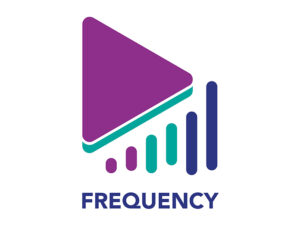 The Community Radio Fund of Canada (CRFC) has launched Frequency, a new platform showcasing local news from campus, community, and Indigenous radio stations across the country, along with Fréquence, a companion site focused on francophone news. Introduced on World Radio Day, the site’s origins lie in funding from the Local Journalism Initiative (LFI), aimed at funding journalism in under-served communities. With 48 anglophone contributors and 30 reporters contributing francophone content, the sites feature short and feature length audio reportage spanning local politics, health, housing, sports, and culture, among other topics. Read more here.
The Community Radio Fund of Canada (CRFC) has launched Frequency, a new platform showcasing local news from campus, community, and Indigenous radio stations across the country, along with Fréquence, a companion site focused on francophone news. Introduced on World Radio Day, the site’s origins lie in funding from the Local Journalism Initiative (LFI), aimed at funding journalism in under-served communities. With 48 anglophone contributors and 30 reporters contributing francophone content, the sites feature short and feature length audio reportage spanning local politics, health, housing, sports, and culture, among other topics. Read more here.
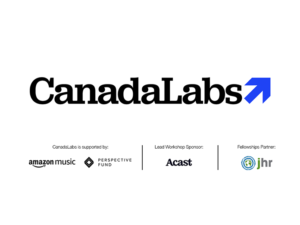 Canadaland has launched CanadaLabs, billed as a “hub for the next generation of audio journalists.” The initiative is launching with the “Local Correspondent” Audio Contest offering a $500 license fee in exchange for non-exclusive broadcast rights. The Audio Journalism Fellowship Program, in partnership with Journalists for Human Rights (JHR), will also offer a four-month immersion in the Canadaland newsroom. The podcast network is also planning to hold monthly workshops, panels, and bootcamps at its Toronto studios.
Canadaland has launched CanadaLabs, billed as a “hub for the next generation of audio journalists.” The initiative is launching with the “Local Correspondent” Audio Contest offering a $500 license fee in exchange for non-exclusive broadcast rights. The Audio Journalism Fellowship Program, in partnership with Journalists for Human Rights (JHR), will also offer a four-month immersion in the Canadaland newsroom. The podcast network is also planning to hold monthly workshops, panels, and bootcamps at its Toronto studios.
 Farm Radio International has launched a new podcast telling the stories of how sub-Saharan communities are adapting to climate change using lessons learned from nature. The podcast, titled Nature Answers: Rural Stories from a Changing Planet, shares stories from rural communities in sub-Saharan Africa who are successfully turning to nature for solutions to a changing climate. Nature Answers is produced in partnership with Carleton University’s School of Journalism. Students spent two to three months in Ghana and Uganda last summer, conducting interviews in partnership with Ghanaian and Ugandan broadcasters and Farm Radio International.
Farm Radio International has launched a new podcast telling the stories of how sub-Saharan communities are adapting to climate change using lessons learned from nature. The podcast, titled Nature Answers: Rural Stories from a Changing Planet, shares stories from rural communities in sub-Saharan Africa who are successfully turning to nature for solutions to a changing climate. Nature Answers is produced in partnership with Carleton University’s School of Journalism. Students spent two to three months in Ghana and Uganda last summer, conducting interviews in partnership with Ghanaian and Ugandan broadcasters and Farm Radio International.
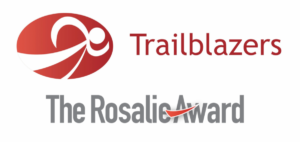 Radio Trailblazers are issuing their last call for nominations for this year’s Rosalie Award, recognizing women who’ve blazed new trails in radio. Learn more here and listen to our podcast with Amanda Cupido on the organization’s evolution here.
Radio Trailblazers are issuing their last call for nominations for this year’s Rosalie Award, recognizing women who’ve blazed new trails in radio. Learn more here and listen to our podcast with Amanda Cupido on the organization’s evolution here.
LISTEN: To mark World Radio Day this year, the National Campus & Community Radio Association (NCRA) and Farm Radio International hosted a live broadcast from downtown Ottawa on Carleton University’s CKCU, celebrating the essential role the medium is still playing, particularly in areas underserved by other media. That’s especially true for a lot of NCRA member stations as community radio experiences a renaissance. Executive Director Barry Rooke returns to Broadcast Dialogue – The Podcast to talk about that and more.
LISTEN: Steve Goldstein returns to the Sound Off Podcast after a nearly three-year absence from the show to talk about video and podcasting. He and Matt Cundill discuss consuming podcasts in different ways, making content available in multiple formats to reach wider audiences, and more.




